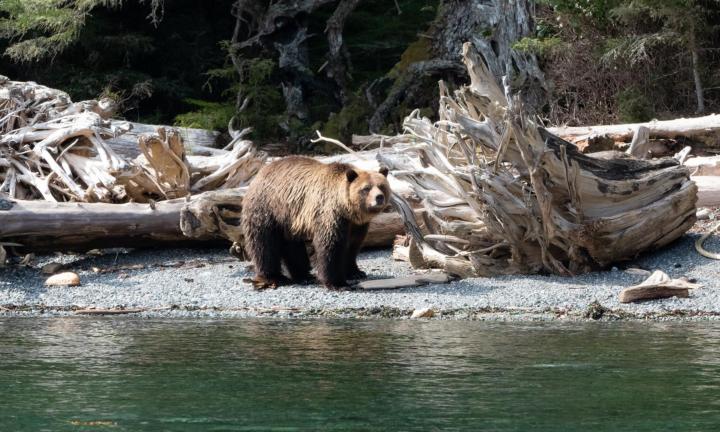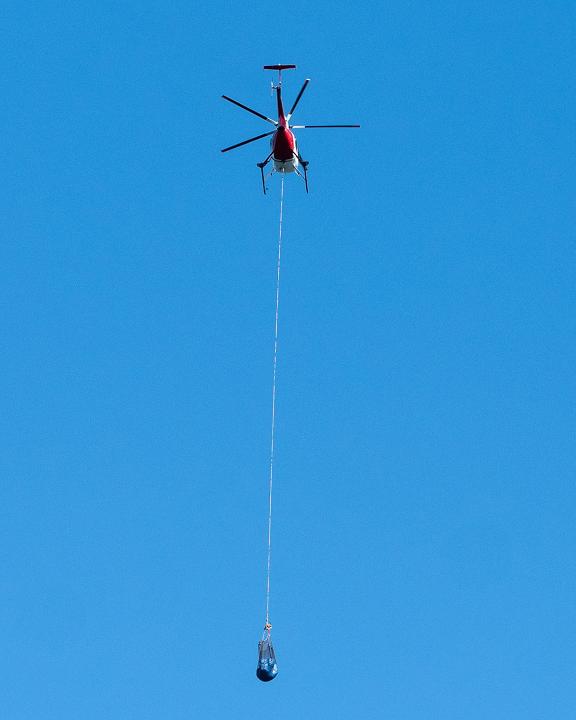 |
Canku Ota
|
 |
|
(Many Paths)
|
||
|
An Online Newsletter
Celebrating Native America
|
||
|
April 2020 - Volume
18 Number 4
|
||
|
|
||
|
Indigenous Input
Helps Save Wayward Grizzly Bear From Summary Killing
|
||
|
by Leyland Cecco - The
Guardian
|
||
When a bear starts feeding off garbage and loses its fear of humans it is quickly shot but an unlikely conservation partnership may be setting a different path In early April, a young grizzly bear swam through the chilly waters off the western coast of Canada in search of food. He came ashore on Hanson Island, one of more than 200 rocky outcrops in British Columbia's Broughton archipelago, and quickly started eating garbage from a cabin. It was a dangerous move: bears that get too comfortable eating food waste and start to lose their fear of humans are quickly shot. But this bear's death was averted through an unlikely partnership between local Indigenous groups and conservation officers, raising hopes of a more holistic approach to wildlife management with greater Indigenous input. In recent years, the presence of bears along the scattering of islands has become a cause of concern for locals and conservation officers. Typically, after months of hibernation, grizzlies in the region will hunt for clams and mussels. But this bear smelled something better and easier: garbage. Locals named it Mali, in honour of the Mamalilikulla First Nation whose traditional territory encompasses the collection of islands. And as Mali continued to forage for food scraps, conservation officials took notice. The province has a long and often fraught relationship with grizzly bears. Until 2017, trophy hunting was permitted in the province – a deeply divisive practice that had lost public support in previous years. As many as 250 bears, from a population of 15,000, were killed annually. The practice has also divided First Nations: many had provided guiding services for hunters and benefited from the hunt, but other Indigenous communities have grown frustrated with the speed with which conservation officers shoot problem bears.
In January, a male grizzly named Gatu appeared in a neighbouring community on the northern tip of Vancouver Island. He became too comfortable around humans. First Nations pleaded with conservation officers to come up with a proactive approach. But their request "just fell on deaf ears" and the bear was shot and killed, said Mike Willie, a wildlife guide and hereditary chief of the Kwikwasut'inuxw Nation.
But when a local guide showed him footage of the new grizzly, Willie hoped this time might be different. Working together and with the non-profit Grizzly Bear Foundation, local First Nations hatched a plan to trap the bear and transport him by helicopter. "We don't want our bears killed any more. We have the right to govern within our own traditional territories and we have inherent rights and we have title," said Willie. Conservation officers were initially set on killing the bear, leading to a brief standoff between the two groups. Soon, the province's environment minister was weighing in, asking all involved to consider a different, non-lethal approach. "Once everything settled down, the conservation officers switched from a kill plan to a relocation plan. And it was amazing really to see them in action," said Nicholas Scapillati, head of the foundation. "They became very caring about how they could trap this bear and relocate him safely." On 13 April, Mali was successfully captured alive and moved to an undisclosed location on the province's mainland. "Within minutes of waking up, he wasn't eating garbage. Now he's in a remote, beautiful estuary, eating sage grass, which is what he should have been doing," said Scapillati. The province's minister of environment, George Heyman, praised the result, saying the "desire for reconciliation" with Indigenous peoples helped guide the process. While the bear's life was saved, locals worry that diminishing food sources, including a decline in salmon, could prompt more bears to make the journey. But for Willie, the success with Mali marks a critical first step in changing what he sees as outdated views of conservation. "It feels that this could be a blueprint to move forward – for us and for other First Nations on the coast," he said. "It was a really good ending." |
||||
|
|
|
|
||
|
|
||
| Canku Ota is a free Newsletter celebrating Native America, its traditions and accomplishments . We do not provide subscriber or visitor names to anyone. Some articles presented in Canku Ota may contain copyright material. We have received appropriate permissions for republishing any articles. Material appearing here is distributed without profit or monetary gain to those who have expressed an interest. This is in accordance with Title 17 U.S.C. Section 107. | ||
|
Canku Ota is a copyright ©
2000 - 2020 of Vicki Williams Barry and Paul Barry.
|
||
 |
 |
|
|
The "Canku
Ota - A Newsletter Celebrating Native America" web site and
its design is the
|
||
|
Copyright ©
1999 - 2020 of Paul C. Barry.
|
||
|
All Rights Reserved.
|
||

